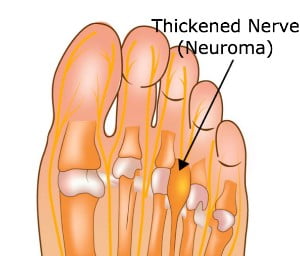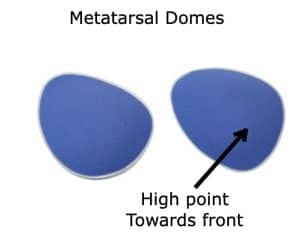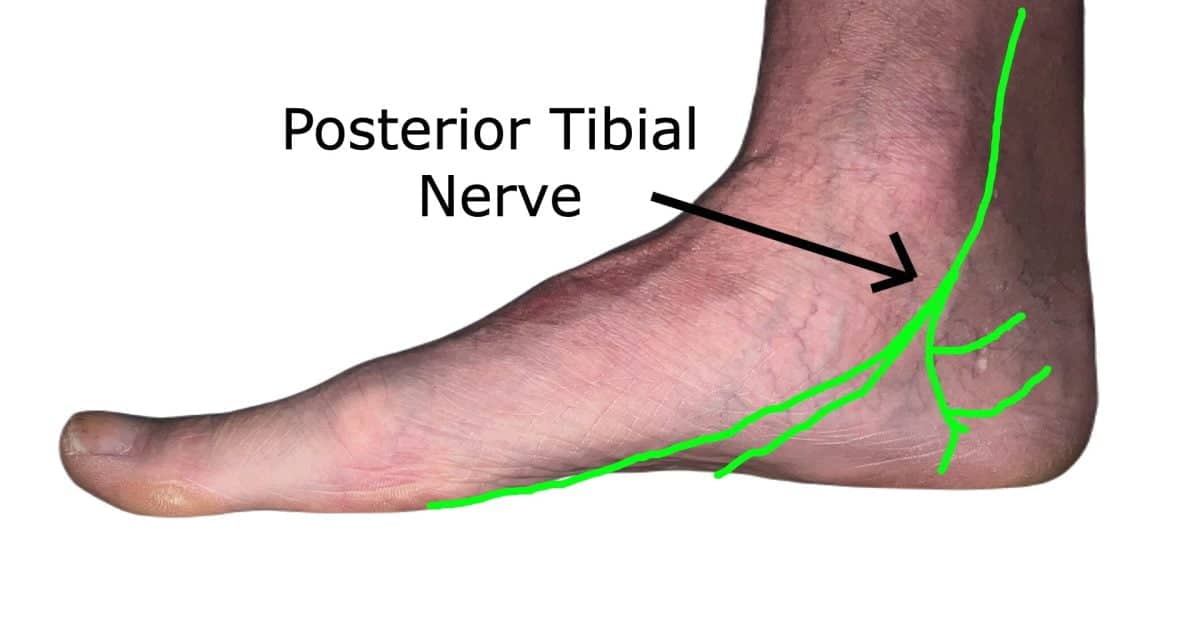Tingling Toes – Causes and Treatment [Updated 2024]
What causes tingling toes?
Have you ever experienced tingling toes?
Tingling in the toes is a common condition people experience during exercise and even wearing day-to-day shoes. This tingling sensation often occurs from compression against a nerve which can be a result of tight fitting footwear or increased swelling in the foot and ankle.
There are a few simple fixes that can be done to the footwear to help if it is too tight fitting.
Changing the way your shoes are laced can increase the width of the shoe as well as wearing thinner socks can increase the amount of space within the shoe.
If either of these do not help resolve the problem, then a new pair of shoes that are suitable for your feet can be recommended.
Or, you may have a more complex condition causing the tingling which will require further investigation by a podiatrist.
High Heeled Shoes
This is one of the easiest ones to diagnose.
High heels very commonly will cause tingling or numbness or pain in the toes.
With stilettos you have the double whammy of most of your weight being forced into your toes just from the position that the high heel puts your foot in; and then you’ve got the point toe box that most of these shoes have causing compression on the toes and the nerves that supply them.

Most of these cases can be prevented just from changing footwear.
Unfortunately this is not a very easy thing to convince some people to do!
Neuritis

This is the general term to describe nerve pain.
The following are some of the main conditions that can cause this:
1. Peripheral Neuropathy
Peripheral Neuropathy is one of the most common and most dangerous causes of tingling toes.
Why do I say most dangerous? Because Peripheral neuropathy can advance to a stage where you are unable to tell if the skin on your feet and toes is actually breaking down – leading to an ulcer.
Foot ulceration from peripheral neuropathy is the most common cause of amputation in people with diabetes (citation).
Some of the most common causes of Peripheral Neuropathy are:
- Diabetes (poorly controlled),
- Chemotherapy,
- Heavy Drinking Long Term,
- Vitamin B12 Deficiency,
- Hypothyroism – Low thyroid hormone,
- Lower back injury causing sciatic nerve damage,
- Localised injury (in feet or ankels) to nerves,
- Certain infections including HIV, Lyme’s Disease, and Shingles (shingles is caused by Varicella virus which causes Chicken Pox),
- Autoimmune Diseases including Rheumatoid Arthritis and Guillain Barre amongst others.
Treatment
Unfortunately there are no great treatments for peripheral neuropathy.
If you are in a lot of pain, then your doctor may prescibe one of the nerve-acting drugs, these work great for people who can tolerate them well.
There is also some evidence that topical (applied to the skin) Capsaicin can also ease the pain caused by peripheral neuropathy.
Important Note!
If you have advanced peripheral neuopathy it is essential that you are managed by a Podiatrist.
Here are two things which you will need to do to prevent damage to your feet:
- Always wear protective shoes. Advanced peripheral neuropathy can cause you to not sense when your skin has been broken. It is therefore crucial that you prevent cuts or breaks to your skin.
- Check your feet everyday! If you notice any problems, get them seen to by a podiatrist immediately.
If you are unable to see the bottom or your feet you can use a mirror on the floor, or if you live with someone you can ask them to check the bottoms of your feet for you before bedtime.
2. Neuroma
Is a thickening of the nerve in your forefoot which then causes tingling in your toes.
The thickened nerve will then have less room between the metatarsal shafts and will be constantly irritated when the metatarsals move with walking.
Morton’s neuroma is the most common type and occurs between the 3rd and 4th metatarsals (see diagram).

Treatment
A podiatrist can help by improving the support for the metatarsals.

By placing a metatarsal dome under the foot, we can restore the transverse arch and take some of the stress off the enlarged nerve.
Metatarsal domes can be incorporated into an orthotic if there are other biomechanical issues to address.
One of the advantages of a pair of orthotics is that you can easily transfer them from shoe to shoe, knowing that the metatarsal domes will remain in the right place.
Surgical Options
In severe cases surgery may be required where the surgeon will actually remove the thickened portion of the nerve.
Surgery will leave you with some side effects including some loss of sensation in the 3rd and 4th toes. Sometimes the resected nerve can return and begin to cause further pain.
For these reasons we believe it is worth trying all conservative methods of off-loading the nerve. Many surgeons will ask if you have tried these methods first.
3. Tarsal Tunnel Syndrome
You’ve probably heard of Carpal Tunnel Syndrome, but not as many people have heard about Tarsal Tunnel Syndrome.
It’s a very similar process and symptoms to carpal tunnel syndrome except that it’s in the feet.
Compression of the posterior tibial nerve causes symptoms of tingling and sometimes pain along the medial of the foot and into the toes.
Flat feet is a common cause of tarsal tunnel syndrome as the pronated foot places compression along that nerve.

4. Bursitis
Is when the bursa (fluid filled sac) which are between the metatarsal becomes bigger due to the pressure which reduces the space adding compression to the nerve.
To treat this condition we will assess your feet, your shoes and ask you questions about your activity in an attempt to work out the cause of the bursitis.
Once we have determined the cause we are able to devise a treatment plan to get the pain under control and the swelling reduced. We can also work with you on ways to prevent the bursitis from occurring again.
5. Joint Capsulitis
Joint capsulitis (or sinovitis) is very common and will often occur with other conditions.
This is because they often share a similar cause, which means that we can devise a plan to treat them all.
All joints in the body have some fluid in them called synovial fluid which acts as a lubricant so that your joints can work without stress.
When there is undue forces placed on the small joints at the front of your foot, the amount of fluid will significantly increase, this is a protective mechanism to reduce stress, but once there is too much fluid the protective mechanism becomes a problem itself!
A podiatrist is very skilled at recognising the cause of capsulitis and working out what adaptions we can make to reduce the pain and allow the swelling to settle down.
6. Plantar Plate Tear
The Plantar plate is made up of ligaments and serves to stabilise the metatarsal phalangeal joint (MPJ), absorbs compressive loads in the forefoot and functions to resist hyperextension of metatarsal phalangeal joints.
Tears that occur in the plantar plate usually happen from recurring overloading. The 2nd MPJ is the most commonly affected joint due to the length.
Plantar plate tears can cause tingling in the toes and acute management by a podiatrist and can be diagnosed by clinical testing.

Don't Ignore Tingling Toes!
It is important to not ignore the issue of tingling toes because if changing the lacing or footwear does not resolve the problem then an underlying injury as mentioned above is likely to be the cause.
Tingling sensations in your toes is one of the body’s ways of telling you that something is wrong and that you need to stop placing stress through the front of your foot.
If normal rest does not ease the sensation then a consult with a podiatrist is your best way of getting the problem to settle down so that you can get on with the lifestyle you want to lead.
Our podiatrists at dynamic podiatry will be able to help you resolve the tingling toes and discomfort.
Call 3351 8878 or Book Online below

